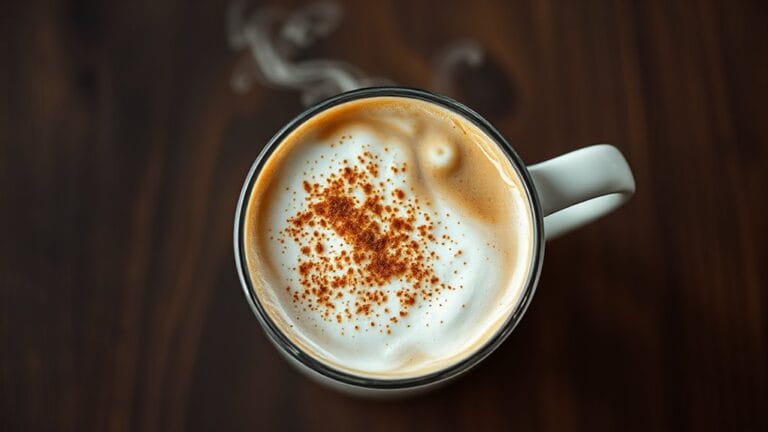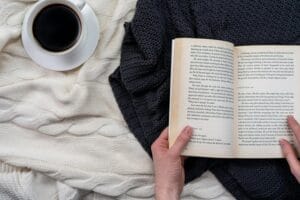A latte’s caffeine depends on five key factors! Initially, espresso shots: a single has 63–75 mg, doubles add double. More milk dilutes strength but not total caffeine—like a 16-oz latte with two shots has 125 mg. Bean type matters: Robusta beans pack twice Arabica’s caffeine. Dark roasts lose mass but keep caffeine. Brewing tricks, like fine grinds or long brew times, enhance extraction. Bigger cups mean more milk or extra shots. Reveal all the details ahead!
Espresso Shot Count
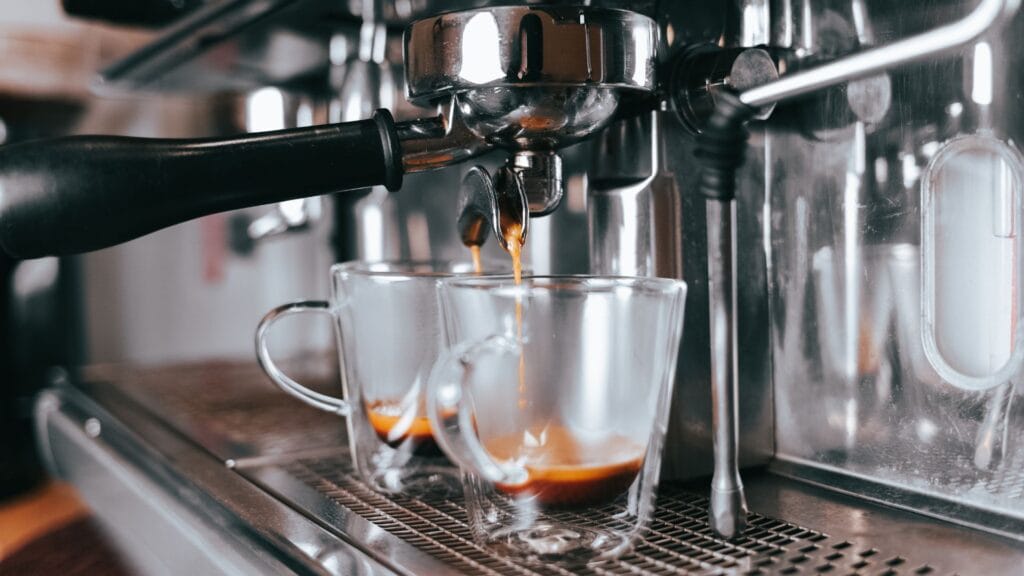
When crafting a latte, the espresso shot count is the secret caffeine boss, quietly calling the shots. A single shot packs 63–75 mg of caffeine, while a double jumps to 126–150 mg, Bean selection shifts this range considerably—Arabica offers a milder buzz while Robusta packs double the caffeine punch—turning sleepyheads into morning heroes. The amount of caffeine in a latte is also influenced by the caffeine concentration of the espresso shots used, which can vary depending on the type of beans and roast level. The roast level, including coffee density, affects the overall caffeine content in a shot of espresso. Shot size matters: one oz for singles, two oz for doubles. Chains like Starbucks lock in standards—small lattes get one shot, larger ones two. But freedom-loving sippers rejoice! Independent cafes often let you call the shots, adding extras for a buzz enhancement. Baristas juggle customer preferences, whether it’s cutting back or revving up. Want control? Just ask—they’ll tweak your drink like a caffeine DJ. Pro tip: chain menus list shot counts, but local spots might wing it. Double-check if you’re chasing precision (or avoiding zombie mode).
Milk-to-Espresso Ratio
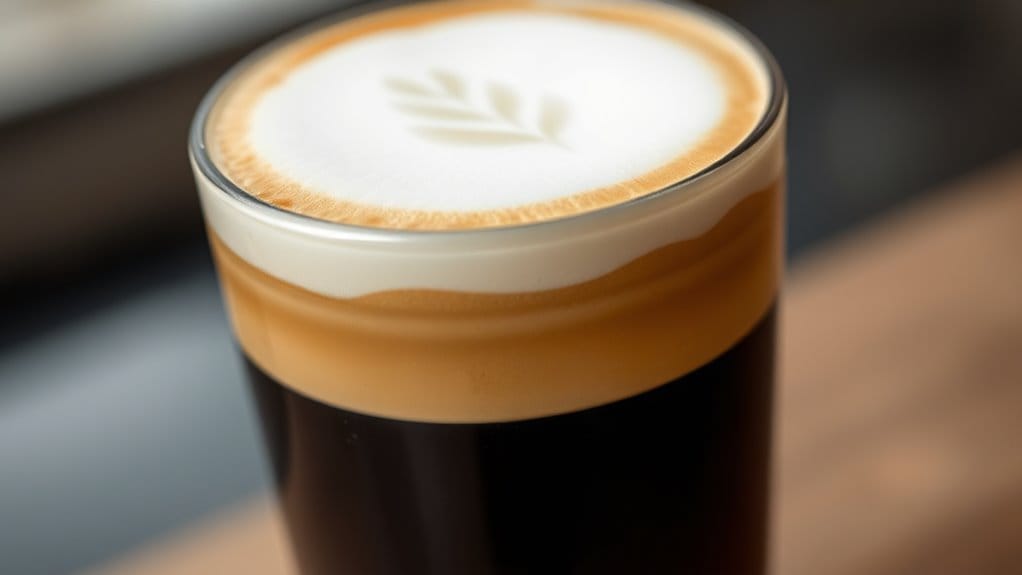
Though the espresso packs the caffeine punch, the milk-to-espresso ratio acts like a conductor, blending strength and smoothness in perfect harmony.
Most lattes follow a 2:1 milk-to-espresso ratio, mixing roughly 320ml steamed milk with 40–60ml espresso in a 16-ounce cup—diluting caffeine concentration per sip but letting the espresso’s total caffeine shine. A double-shot latte delivers 125 mg of caffeine, ensuring a robust base beneath the milk’s velvet layers.
More milk softens bitterness, mutes bold flavors, and creates a creamy texture, while less milk amps up coffee intensity. Flavor balance hinges on this ratio: tilt toward espresso for a bolder kick, or lean into milk for silky sweetness.
Texture modulation comes from frothy, steamed milk, not caffeine. Coffee shops riff on ratios—custom “extra coffee” lattes pack more espresso, “light” versions drown it—offering freedom to tweak strength sip by sip.
Type and Roast of Coffee Beans
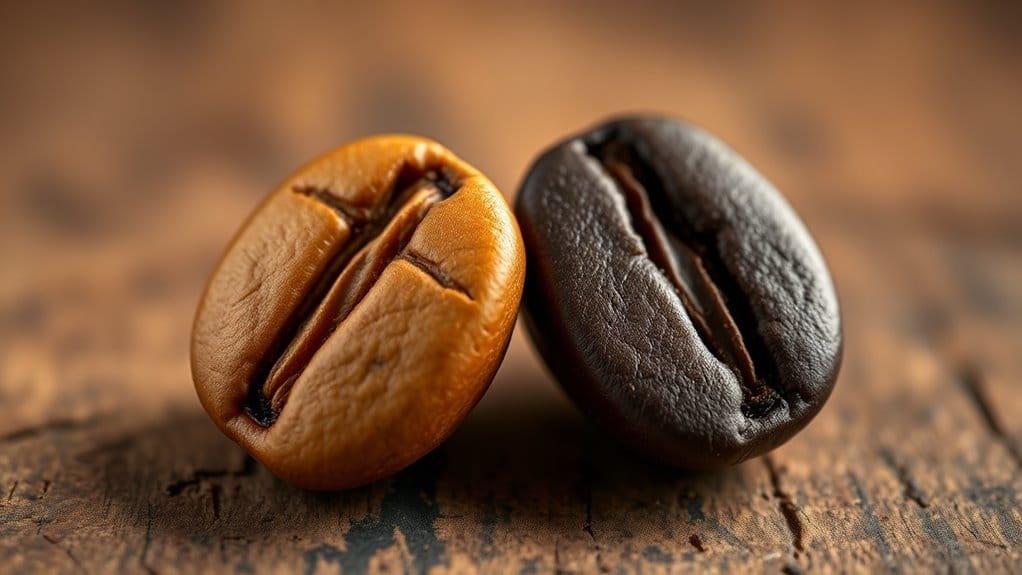
Bean varieties rule the caffeine game. Arabica, the smooth-talking crowd favorite, packs 1–1.5% caffeine, loved for sweetness but weaker kick.
Robusta, the bold underdog, doubles that with 2.2–2.7%, its bitter edge and tough-grow grit—think low-altitude survival—turbocharging caffeine synthesis as pest repellent.
Grow location matters: high-altitude Arabica (Colombia, Ethiopia) sips slower, while lowland Robusta (Vietnam, Indonesia) hustles harder.
Robusta’s exceptional heat tolerance allows it to thrive in a variety of environments, making it a popular choice for coffee farmers.
Roasting? Dark or light, caffeine stays stubbornly stable—heat barely dents it. But dark roasts lose mass (shrinkage!), so a “scoop” might match light roast’s caffeine per cup.
Moral: bean type calls the shots, while roast just dresses the party.
The optimal crema formation is also influenced by the type and roast of coffee beans, which can affect the overall flavor and quality of the latte.
Choose wisely, and let your taste buds—and neurons—roam free.
Brewing Parameters
Bean type and roast set the stage, but brewing steps take the spotlight. Brewing techniques like grind size, water temperature, and extraction time dictate caffeine levels by altering extraction efficiency—the key to revealing coffee’s energy. Finer grinds = more surface area for caffeine to escape, while hotter water (90-96°C) yanks it out faster, like a caffeinated sprint. Brew too long, and bitterness gatecrashes; too short, and caffeine hides. Milk ratio? More milk spreads caffeine thin, softening the kick without reducing the total dose. Immersion brewing methods, which involve static immersion, can also impact caffeine content by allowing for a high degree of control over brewing parameters. Tweak these variables like a pro, and your latte’s buzz bends to your will. The pour over method, which involves precise control, allows for a high degree of customization in brewing parameters to achieve the perfect balance of flavors and caffeine content.
| Factor | Change | Caffeine Effect |
|---|---|---|
| Grind Size | Finer | Higher extraction |
| Brew Time | Longer | More caffeine extracted |
| Water Temperature | 90-96°C (optimal) | Enhances efficiency |
| Milk Ratio | Increase milk | Lower concentration |
Serving Size of Latte
A latte’s caffeine punch starts with its size, and not all cups are created equal!
Coffee shops serve lattes in sizes like small latte (8 oz) or large latte (16 oz), with extra-large options hitting 20 oz. Bigger cups mean more espresso shots—a small latte might pack one shot (63 mg caffeine), while a large could double that.
But here’s the twist: more milk in larger sizes waters down espresso’s zip, even though total caffeine rises.
Sizes vary by café, too—like puzzle pieces that don’t always fit the same. Want control? Check if your favorite spot serves a 12 oz “medium” or skips straight to large.
Pro tip: a latte’s caffeine isn’t just about cup size; extra shots turn it into a turbocharged joyride. Choose wisely, sip freely!
Understanding your daily intake is crucial to avoid excessive caffeine consumption, which can lead to negative side effects like insomnia and anxiety.
Frequently Asked Questions
Does Decaf Latte Contain Any Caffeine?
Decaf lattes contain residual caffeine, as the decaf process typically leaves 1–3% of original caffeine amounts. An average 8 oz decaf latte may hold 3–15 mg of caffeine, sourced primarily from espresso components.
Can Coffee Bean Altitude Affect Latte Caffeine?
Dramatically dictated by altitude, origin altitude slashes caffeine content: high-elevation beans inherently lack potency. Bean variety amplifies these differences, while brewing method fixes the final dose – a caffeinated democracy shaped by nature and technique.
Do Flavored Syrups Add Caffeine to Lattes?
Flavored syrups generally do not contribute caffeine content to lattes unless they contain coffee-derived ingredients. Syrups infused with coffee extracts or cold-brew concentrate may add minor caffeine, varying by brand and serving size. Most standard flavorings remain caffeine-free.
Does Soy Milk Contribute Caffeine to Lattes?
Soy milk properties exclude caffeine; latte recipes source stimulation purely from espresso. Soybeans inherently lack stimulants, while coffee beans naturally contain them. Beverage customization remains unbound by milk alternatives, maintaining caffeine autonomy through ingredient selection.
Does Coffee Bean Freshness Impact Caffeine Levels?
Coffee bean freshness minimally impacts caffeine levels, as caffeine remains chemically stable over time. Caffeine content primarily depends on bean quality (species variance) and brewing method efficiency in extraction processes, not freshness-related degradation.
References
- https://www.umamicart.com/how-much-caffeine-in-a-latte/
- https://www.vinhood.com/en/magazine-en/i-5-fattori-che-cambiano-il-contenuto-di-caffeina-nel-caffe/
- https://www.javapresse.com/blogs/enjoying-coffee/the-hidden-truth-about-caffeine-in-lattes
- https://www.baristadelcaffe.co.uk/coffee-beans/how-much-caffeine-is-in-a-latte/
- https://www.hibrew.com/blogs/brew-guides/how-much-caffeine-in-a-shot-of-espresso
- https://www.javapresse.com/blogs/enjoying-coffee/revealed-the-surprising-amount-of-caffeine-in-a-latte
- https://www.drinksupercoffee.com/blogs/nutrition/caffeine-in-espresso
- https://generalwarfieldscoffee.com/blogs/our-blog/caffeine-in-an-espresso-shot
- https://www.lingonberrycafe.com/s/stories/exploring-the-caffeine-content-of-various-coffee-drinks

